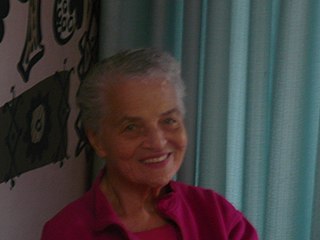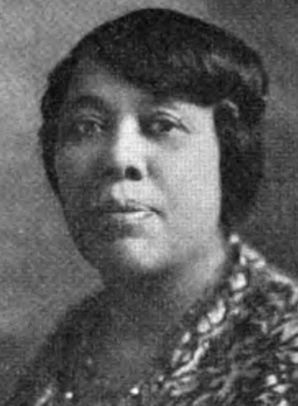
Harriet Elisabeth Beecher Stowe was an American author and abolitionist. She came from the religious Beecher family and wrote the popular novel Uncle Tom's Cabin (1852), which depicts the harsh conditions experienced by enslaved African Americans. The book reached an audience of millions as a novel and play, and became influential in the United States and in Great Britain, energizing anti-slavery forces in the American North, while provoking widespread anger in the South. Stowe wrote 30 books, including novels, three travel memoirs, and collections of articles and letters. She was influential both for her writings as well as for her public stances and debates on social issues of the day.

Lyman Beecher was a Presbyterian minister, and the father of 13 children, many of whom became writers or ministers, including Harriet Beecher Stowe, Henry Ward Beecher, Charles Beecher, Edward Beecher, Isabella Beecher Hooker, Catharine Beecher, and Thomas K. Beecher.

Lane Seminary, sometimes called Cincinnati Lane Seminary, and later renamed Lane Theological Seminary, was a Presbyterian theological college that operated from 1829 to 1932 in Walnut Hills, Ohio, today a neighborhood in Cincinnati. Its campus was bounded by today's Gilbert, Yale, Park, and Chapel Streets.
The Semi-Colon Club was an informal organization of talented writers in Cincinnati, Ohio during the mid-19th century. Harriet Beecher Stowe was a member of the club while living in the city from 1832 until 1850. Stowe's experiences in Cincinnati and her time in the club were major factors in her work Uncle Tom's Cabin.

The Harriet Beecher Stowe House is a historic home in Cincinnati, Ohio which was once the residence of influential antislavery author Harriet Beecher Stowe, author of the 1852 novel Uncle Tom's Cabin.
Tyrone Keith Yates is a Hamilton County Municipal Court Judge. He was elected on November 8, 2011.

Originating in New England, one particular Beecher family in the 19th century was a political family notable for issues of religion, civil rights, and social reform. Notable members of the family include clergy, educators, authors and artists. Many of the family were Yale-educated and advocated for abolitionism, temperance, and women's rights. Some of the family provided material or ideological support to the Union in the American Civil War. The family is of English descent.

The Harriet Beecher Stowe House is a historic home and National Historic Landmark at 63 Federal Street in Brunswick, Maine, notable as a short-term home of Harriet Beecher Stowe and Calvin Ellis Stowe and where Harriet wrote her 1852 novel Uncle Tom's Cabin. Earlier, it had been the home of Henry Wadsworth Longfellow as a student. It is today owned by Bowdoin College. A space within the house, called Harriet's Writing Room, is open to the public.

Calvin Ellis Stowe was an American Biblical scholar who helped spread public education in the United States. Over his career, he was a professor of languages and Biblical and sacred literature at Andover Theological Seminary, Dartmouth College, Lane Theological Seminary, and Bowdoin College. He was the husband and literary agent of Harriet Beecher Stowe, author of the best-seller Uncle Tom's Cabin.

Queensgate is one of the 52 neighborhoods of Cincinnati, Ohio. It sits in the valley of Downtown Cincinnati and has been dominated by industrial and commercial warehouses for most of its history. Cincinnati's nickname of "Porkopolis" started here with hog slaughtering in the early 19th century.

Walnut Hills is one of the 52 neighborhoods of Cincinnati, Ohio. One of the city's oldest hilltop neighborhoods, it is a large diverse area on the near east side of Cincinnati. The population was 6,344 in the 2020 census.
The Cincinnati riots of 1836 were caused by racial tensions at a time when African Americans, some of whom had escaped from slavery in the Southern United States, were competing with whites for jobs. The racial riots occurred in Cincinnati, Ohio, United States in April and July 1836 by a mob of whites against black residents. These were part of a pattern of violence at that time. A severe riot had occurred in 1829, led by ethnic Irish, and another riot against blacks broke out in 1841. After the Cincinnati riots of 1829, in which many African Americans lost their homes and property, a growing number of whites, such as the "Lane rebels" who withdrew from the Cincinnati Lane Seminary en masse in 1834 over the issue of abolition, became sympathetic to their plight. The anti-abolitionist rioters of 1836, worried about their jobs if they had to compete with more blacks, attacked both the blacks and white supporters.

The Cincinnati riots of 1841 occurred after a long drought had created widespread unemployment in Cincinnati, Ohio, United States. Over a period of several days in September 1841, unemployed whites attacked black residents who defended themselves. Many blacks were rounded up and held behind a cordon and then moved to the jail. According to the authorities, this was for their own protection.

Marian Regelia Alexander Spencer was an American politician who served as Vice Mayor of the Cincinnati City Council in Cincinnati, Ohio. She was the first African American woman to be elected to the Council. The granddaughter of a former slave, she was active in the civil rights movement to desegregate schools and end discrimination, and became the first female president of the Cincinnati NAACP chapter. She also served on the University of Cincinnati board of trustees.
Raymond S. Lane, Jr. is a sculptor known for creating a series of hand-built clay sculptures about Harriet Tubman. The sculptures were first displayed at an exhibit in the Public Library of Hamilton County titled "Harriet Tubman's Experience in the Underground Railroad." The sculptures are now permanently loaned at the Harriet Beecher Stowe House in Cincinnati, Ohio, where they are on display.

Jennie Davis Porter was an American educator. She was the first African-American to receive a PhD from the University of Cincinnati and became the first black female principal of a public school in Cincinnati. In 1989, she was posthumously inducted into the Ohio Women's Hall of Fame.
Sons & Daughters of Thunder is a docudrama that portrays the true story of the Lane Seminary Debates on Slavery of 1834. Based upon a play from the 1970s by Earlene Hawley and Curtis Heeter, the film is the product of Kelly and Tammy Rundle of Fourth Wall Films of Moline, Illinois. The name Sons & Daughters of Thunder is based upon a Biblical phrase, Mark 3:17.
Black and Tan clubs were nightclubs in the United States in the early 20th century catering to the black and mixed-race ("tan") population. They flourished in the speakeasy era and were often popular places of entertainment linked to the early jazz years. With time the definition simply came to mean black and white clientele.

Samuel Milton Goldhagen was an American Army Air Corps commissioned officer who served during World War II in the Pacific and European theaters. He initially enlisted June 9, 1941, and from his barracks, sent a letter to President Franklin Roosevelt, as a Jewish American, imploring the need to defeat Nazism, and to extend the service term of the enlisted soldiers. A return letter was sent by the White House which included the actual pen used by President Roosevelt to sign the extension of the American draft in preparation for the war effort. Samuel's service included hosting a military support dinner with Hollywood film stars of the day, was present at Pearl Harbor during the attack, and as B-24 Bombardier, became a German POW, and ultimately died from his injuries that occurred during his final mission over Munich, Germany.













